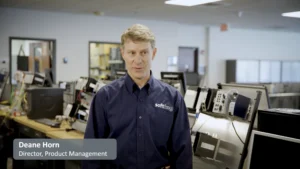The Great Resignation, Automated Solutions to the Hiring Crisis within the Printing Industry
Daniel Litwin spoke to Patrick Coldewey, President and CEO of DigiTech, about the automation hiring process within the printing industry. The conversation covered a breadth of points, including the Great Resignation, skilled workers aging out, and how smaller companies use automation [in hiring] to their advantage.
The Great Resignation is not showing any signs of slowing down, and in fact, recent labor statistics show that 4.3 million people quit their jobs in January 2022. This is only a slight improvement from the highest numbers that were seen in November 2021. Workers are biding their time to find a new opportunity, and only a few are reporting “buyer’s remorse” or regret over quitting their jobs preemptively.
Naturally, the printing industry hasn’t been spared from this trend either. As a legacy workforce ages out and a new workforce fails to gain steam, the answers to more efficient printing processes might be found in automation technologies. This episode highlights the challenges of the Great Resignation and guides listeners to potential solutions and strategies to deal with the situation.
One solution is automating the hiring process to combat the crisis. This trend is taking printing newer and smaller companies by storm while focusing on supporting growth and efficiency. Companies are adopting technology like this to give them an edge on the more prominent and established companies, setting them up to be more agile in the long run.
Coldewey and Litwin discussed how colleagues and other professionals feel about the current state of the great resignation. In addition to the gap of skilled workers, the training pipeline for printing trade skills is not being nurtured at the university level or by the printing industry. Workloads are shifting and adding fresh challenges in terms of hiring new talent.








